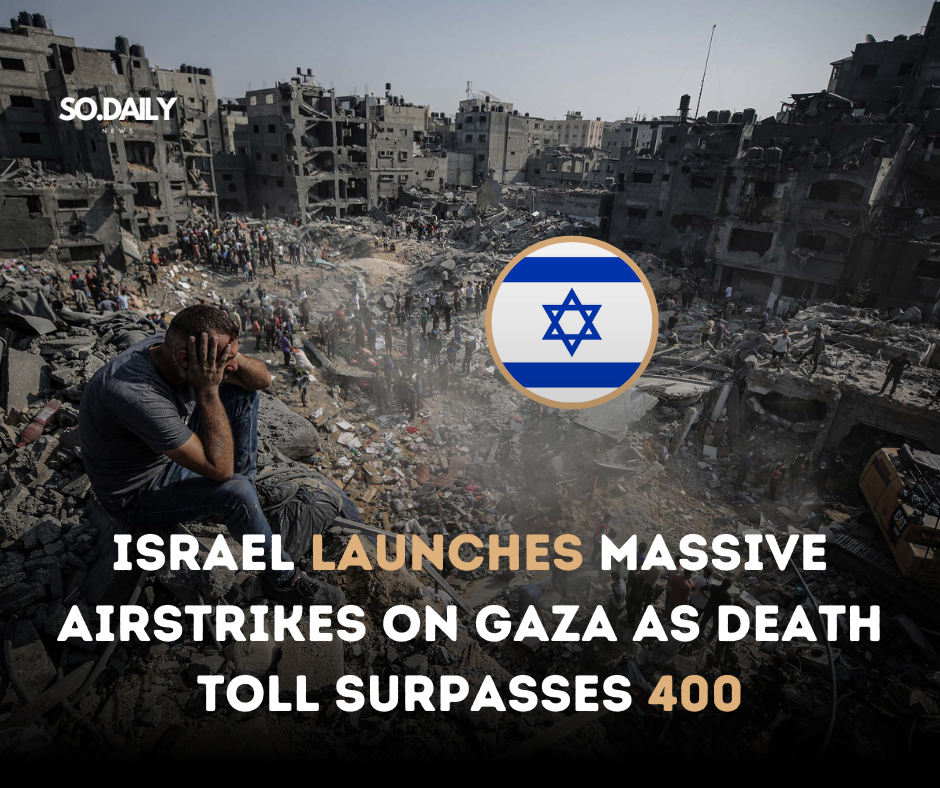On March 18, 2025, Israel conducted a series of extensive airstrikes across the Gaza Strip, effectively ending a ceasefire that had been in place since January. These strikes resulted in the deaths of over 400 Palestinians, marking one of the deadliest 24-hour periods in the region since the conflict’s escalation in 2023.
Ceasefire Breakdown and Military Actions
The ceasefire, which had provided a brief period of relative calm for Gaza’s 2.3 million residents, was shattered as both Israel and Hamas accused each other of violating the truce. Israeli Prime Minister Benjamin Netanyahu declared that the airstrikes were “just the beginning,” emphasizing the nation’s intent to dismantle Hamas’s infrastructure and secure the release of Israeli hostages.
According to the Israeli military, the strikes targeted Hamas command centers, weapons depots, and underground tunnels. However, reports indicate that residential areas were also hit, leading to significant civilian casualties. Hamas, in response, vowed retaliation, heightening fears of an extended and more intense conflict.
Humanitarian Impact and Civilian Casualties
The Gaza Ministry of Health reported that among the casualties were numerous women and children, underscoring the severe humanitarian crisis exacerbated by the renewed violence. The densely populated region, already struggling with limited resources, now faces increased challenges in providing medical care and essential services to its inhabitants. Hospitals are overwhelmed, with medical supplies running critically low due to the ongoing blockade.
International Condemnation and Calls for Restraint
The international community has expressed grave concerns over the escalation. Countries such as Egypt and Qatar, along with various foreign ministries, have condemned the airstrikes and urged both parties to exercise restraint to prevent further civilian suffering. The United Nations has highlighted the urgent need to address the worsening humanitarian conditions in Gaza, warning that continued hostilities could lead to a humanitarian catastrophe.
Meanwhile, diplomatic efforts to broker a renewed ceasefire have been met with resistance. Mediation attempts by regional and global powers are ongoing, but tensions remain high as both sides refuse to back down.
Domestic Reactions and Political Tensions in Israel
Within Israel, the renewed military actions have coincided with internal political tensions. Public opinion appears divided, with some citizens advocating for a focus on negotiating the release of hostages, while others support continued military efforts against Hamas. Netanyahu’s recent policies, including attempts to exert more control over the judiciary, have further fueled domestic debates and led to widespread protests.
The situation has also raised concerns about regional stability, with fears that the conflict could spill over into neighboring countries. Lebanon’s Hezbollah has already signaled its support for Hamas, increasing the risk of a broader confrontation.
Conclusion
The resumption of large-scale airstrikes in Gaza signifies a critical juncture in the Israeli-Palestinian conflict, with profound implications for regional stability and humanitarian conditions. As the situation develops, the international community continues to monitor events closely, advocating for measures to protect civilians and restore peace. Whether diplomatic efforts will succeed in de-escalating the crisis remains uncertain, but the urgency for a sustainable solution has never been greater.
